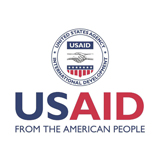
The U.S. Government is committed and working toward the goal of Ending Preventable Child and Maternal Deaths (EPCMD) in a generation. In June of 2014, the U.S. Agency for International Development (USAID) released a vision for maternal health, Ending Preventable Maternal Mortality: USAID Maternal Health Vision for Action. The document lays out a vision for “a world where no woman dies from preventable maternal causes and maternal and fetal health are improved” and sets out a plan for USAID to contribute to accelerating reductions in the maternal mortality ratio (MMR) and improving maternal and fetal health with targets for 2020. This document, Ending Prventable Maternal Mortality: USAID Maternal Health Vision for Action, Evidence for Strategic Approaches, lays out the evidence that will help achieve this vision.
Maternal mortality has nearly halved over the past two and a half decades, yet 289,000 women worldwide still die each year as a result of pregnancy and childbirth. As mortality has declined, disparities have become more apparent. The risk of death is disproportionately highest among the most vulnerable women in the poorest of nations.
Yet, most maternal deaths are preventable – as are many of the other poor health consequences of pregnancy. Among the 189 million women who are pregnant annually, 122 million have a live birth, and nearly 3 million suffer a stillbirth. About 10 percent of mothers suffer a maternal complication during pregnancy or in the intrapartum period, and up to 40 percent may have morbidities or disabilities post-birth that are attributable to the pregnancy or birth. Among all babies born, 15 million are preterm, and 1 million of these will die within the first week; many more are born small for gestational age. The toll of death and ill health related to pregnancy and birth adversely affects not only mothers’ and children’s health, but also their development and ability to contribute productively to their communities and societies. Furthermore, the financial costs of maternal complications and ill health and associated problems for newborns are a drain on families and society.
Access to affordable, high quality, respectful maternal health care is fundamental to the survival of pregnant and childbearing women and girls, as well as newborns. It includes access to services, goods, and information and the removal of inequities. Yet, discrimination impedes a woman from her right to access such maternity care due to age or marital status or to social, cultural, racial, ethnic, geographic, economic, legal, and political barriers. Women’s lack of agency to utilize services contributes to needless death and suffering. Beyond lack of decision-making authority, women are less likely to have control over or access to the financial resources needed to pay for transportation and direct or incidental fees for maternal services.
Weak health systems, including those lacking leadership or management or having inadequate staffing and supplies, underlie poor care and contribute to the poor health outcomes. Inadequate financing and budgetary allocations, as well as poor infrastructure (space, water, sanitation, and electricity), poor or disjointed information systems and lack of use of data for improved policy formulation and implementation, ensure weak systems remain weak.